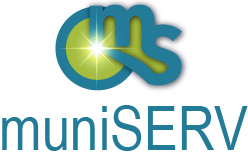It has been a spring that many will say there was nothing to smile about. It was cold, rainy and dark. From all the rain we have beautiful green lawns and flowers starting to bloom. Again there are many people in parts of the world that are not smiling with all the rain causing flooding and destruction. I wanted to take this opportunity to write about smiling and how contagious it may be in our workplace and for our clients.
Some people are always smiling, cheerful, and they seem to brighten up a room. Their positive attitude and gusto are identified by those they come in contact with. Moreover, we have all encountered those have the opposite effect on people-the “doom and gloom effect.” we often refer to one’s attitude and yet what is that? It is your mental state or the position you take regarding life.
Zig Ziglar once said, “Your attitude, not your aptitude, will determine your altitude.” If you take the word “OPPORTUNITYISNOWHERE,” some people see the “no where” while others see “now here.” So is the glass half empty or half full? Often the difference between success and failure is not linked to how we look, how we dress, or how much education we have; it is based on how we think!
Great leaders share the same thought; knowing that a positive attitude is contagious. As leaders, it is vital that we display a positive mindset daily. After all, if we expect our employees to express positive attitudes, we should model such behaviours for them to see.
Each day we have a choice of whether we elect to display a positive or negative attitude. Daily, we encounter negative attitudes at work and in our personal lives. If you remain positive amongst pessimism, you can be contagious.
Some times it is not that easy. I have found some tips I would like to share to help you be positive from “Attitudes are Contagious. Is Yours Worth Catching” by Patti Wanamaker.
- Be enthusiastic – people love to be around enthusiastic people. Enthusiasm is contagious and draws others to you like a magnet.
- Associate with positive people – if you want to stay positive, stay away from people that drag you down. Associate yourself around like-minded people.
- Smile – smiling makes it all better. Smiling releases endorphins and serotonin, which are known as the feel-good hormones. It is a lot easier to adopt a positive attitude when you feel good!
- Change your thoughts – positive thoughts lead to a positive attitude, while negative thoughts lead to an adverse reaction.
- Stop complaining – limit your complaints. Whining and griping about anything and everything will not create a positive attitude. When you are complaining, you are spreading negativity.
· If you want more success in your leadership role and to have a positive impact on your employees, then make sure your attitude is worth catching.
Many of you are thinking, what is there to smile about, and why maintain a positive attitude when there are doom and gloom around us? Research has shown that there are health benefits of smiling in the workplace. We are dealing with conflict, mental health issues and have difficult situations arising every day as we manage our workplace. Interestingly many years ago, it was declared that “the smile is the best medicine for the happiness of humanity.” Later scientific research explained the effects and physiological benefits of smiling for a healthier life. Smiling can be beneficial, in dealing with illness, pressures of everyday life, stress at work, and smiling can even substantially change the quality and forecasts of our lives.
Would life not be better if people smile regularly? I think smiling every day would keep you away from the doctor and feeling self-confident. Try these:
- By smiling, we can reduce the level of stress hormones. Smiling helps us to increase the number of antibody-producing cells and improve the effectiveness of other cells.
- Smiling is good for our general health. Smiling 100 times is equivalent to ten minutes of rowing or cycling in fifteen minutes.
- Sometimes we just want to laugh or cry. That means you want to release all the pent feelings in your head, making you feel both physically and mentally better. So to reduce anxiety smile often, even when you are not happy. Smiling at others will, in turn, help them be happy.
- Smiling can take you from being angry, stressed, feeling guilty, and negative to putting you in a more favourable frame of mind. Smiling will make you change yourself and improve the attitudes and thinking to other people to the better.
- When people can view an event that may be frightening as funny, they may be able to feel more content and see the events occurred just merely as a “challenge” in life, rather than a threat.
There are times when smiling, and laughter can be contagious. If you smile more than you can make other people around you also smile more. So by smiling yourself, you can reduce the stress levels of people around you and change their moods. Maybe even improve the quality of social interaction, and reduce your stress level as well.
They say that optimists have a stronger immune system and can fight disease better than the pessimists. There is a link between a positive attitude and good health, which is measured in many different ways. In general, researchers have discovered that optimistic people are more healthy, and they have a stronger immune system.
According to the British Organization of Dental Health, a smile has the level of stimulation as eating 2000 chocolate bars.
A smile does not cost you a cent, and it is easy to spread. A recent study showed that preschool children laugh 400 times a day, but the time we reach adulthood, we just laugh an average of 17 times per day.
So take the challenge and smile more often and find things in your lives that you can laugh about.
Stay great and healthy.
Monika B. Jensen PhD is Principal of the Aviary Group and can be contacted by email at [email protected]









 If 10,000 hours (or 5 years of 8 hours of practice 5 days a week) scares the pants off you, it has been established that 10,000 hours is insufficient in the most highly competitive fields such as the Olympics. Performances that were record-setting twenty years ago are now achieved in training by many competitive athletes! Or, maybe looking at this from a more reassuring angle, in pursuits where the bar is set low (like leadership?), significantly fewer than 10,000 hours are required to become outstanding. After all, the U.S. had 1 Olympic athlete in Rio for every 583,213 Americans – as compared to 1 people manager for every 4.7 employees.
If 10,000 hours (or 5 years of 8 hours of practice 5 days a week) scares the pants off you, it has been established that 10,000 hours is insufficient in the most highly competitive fields such as the Olympics. Performances that were record-setting twenty years ago are now achieved in training by many competitive athletes! Or, maybe looking at this from a more reassuring angle, in pursuits where the bar is set low (like leadership?), significantly fewer than 10,000 hours are required to become outstanding. After all, the U.S. had 1 Olympic athlete in Rio for every 583,213 Americans – as compared to 1 people manager for every 4.7 employees.


.png)




